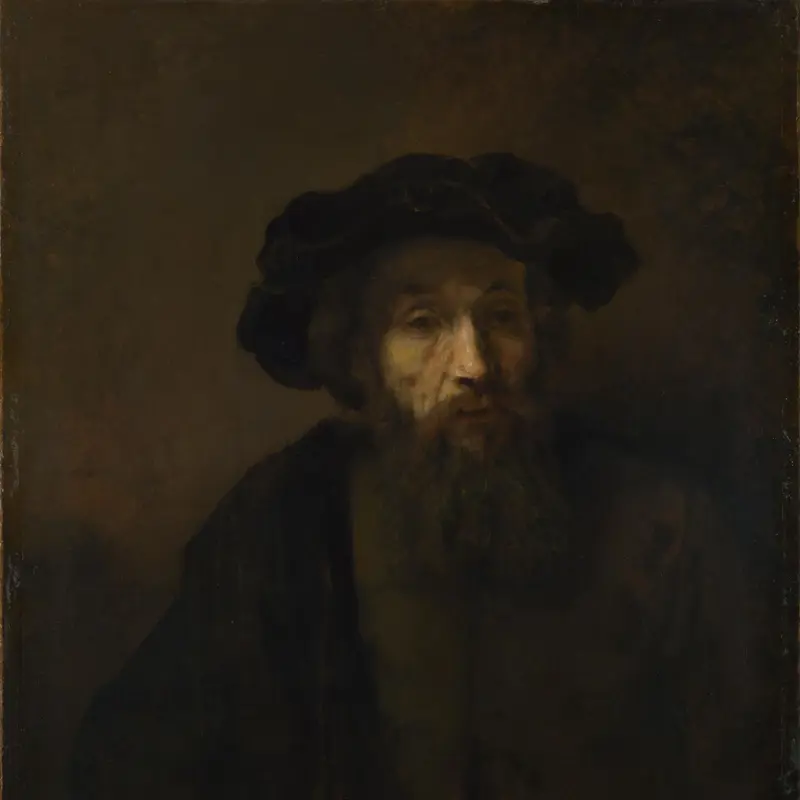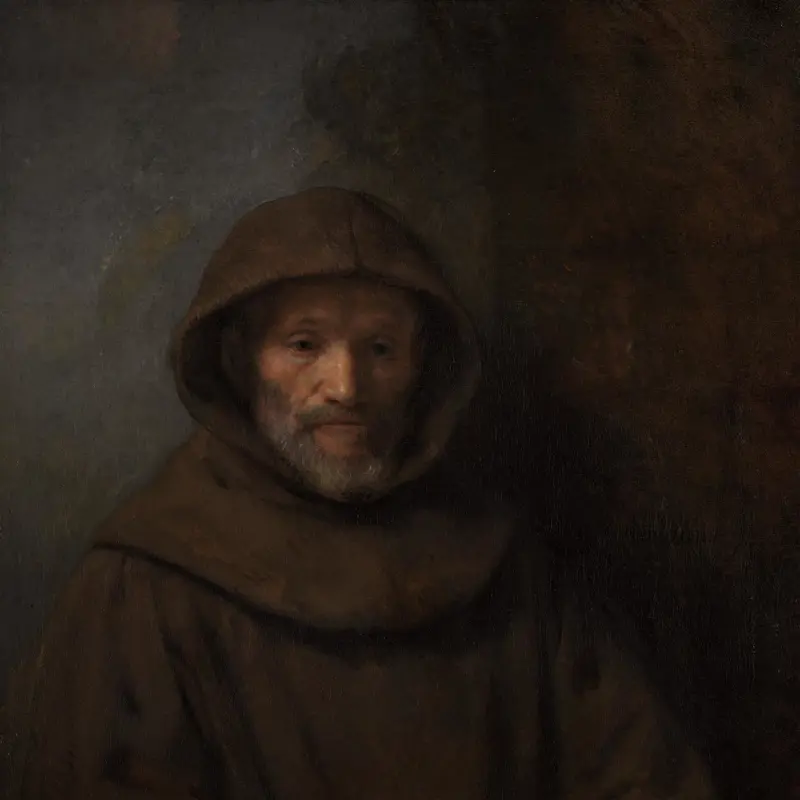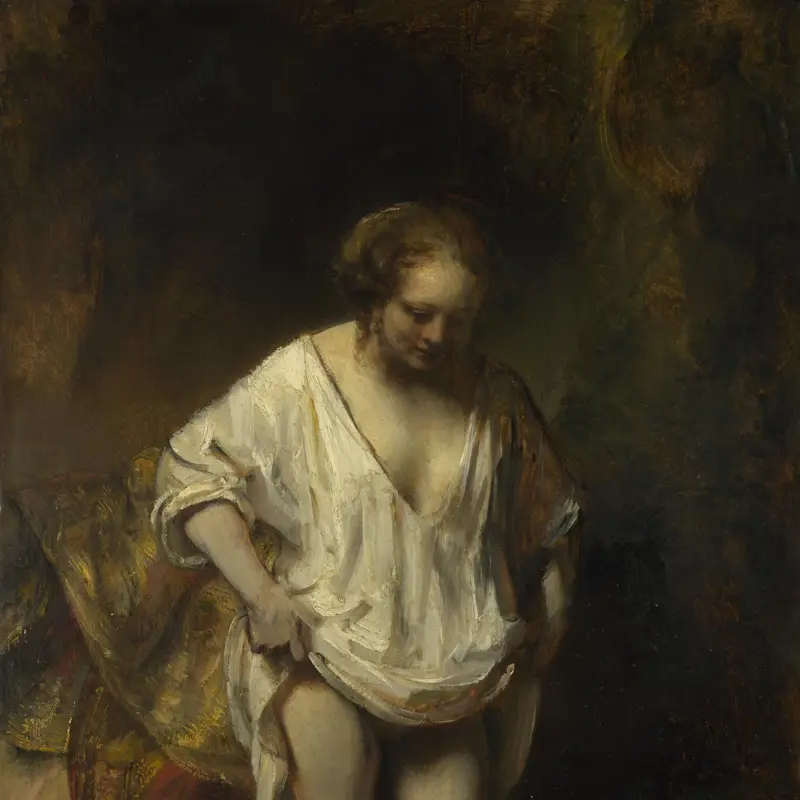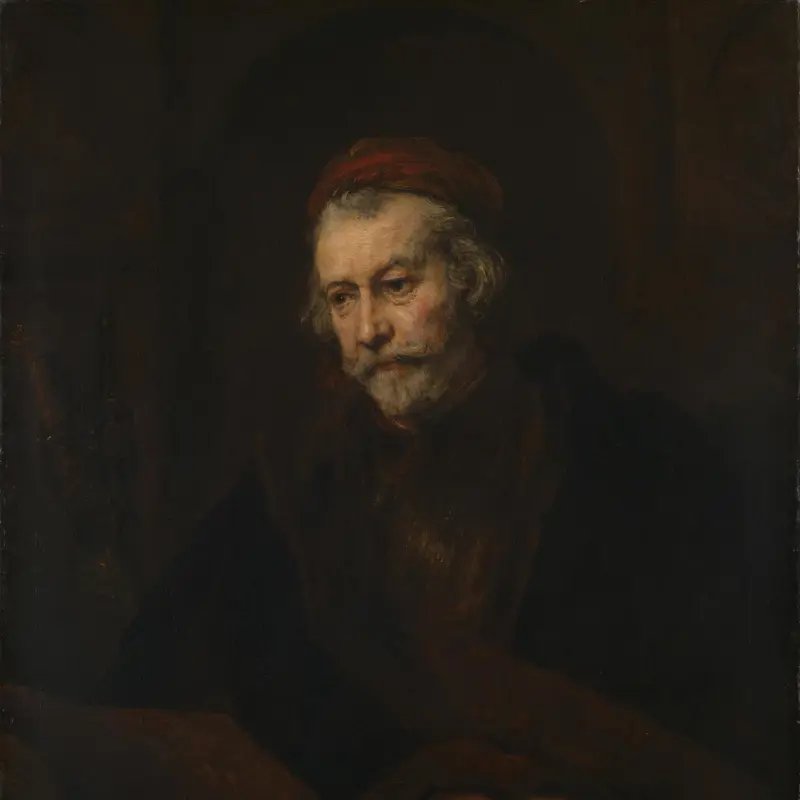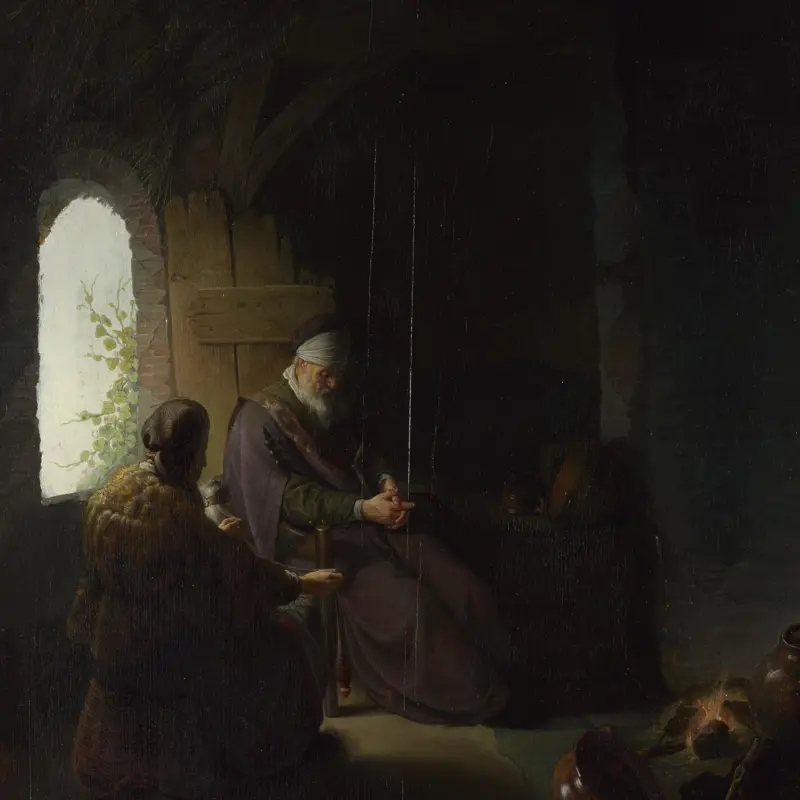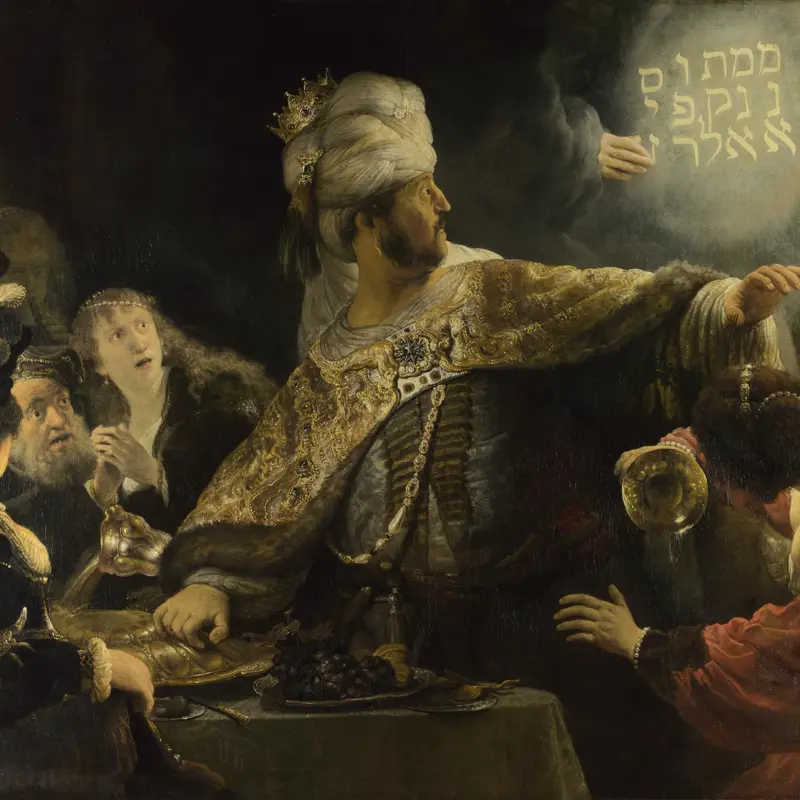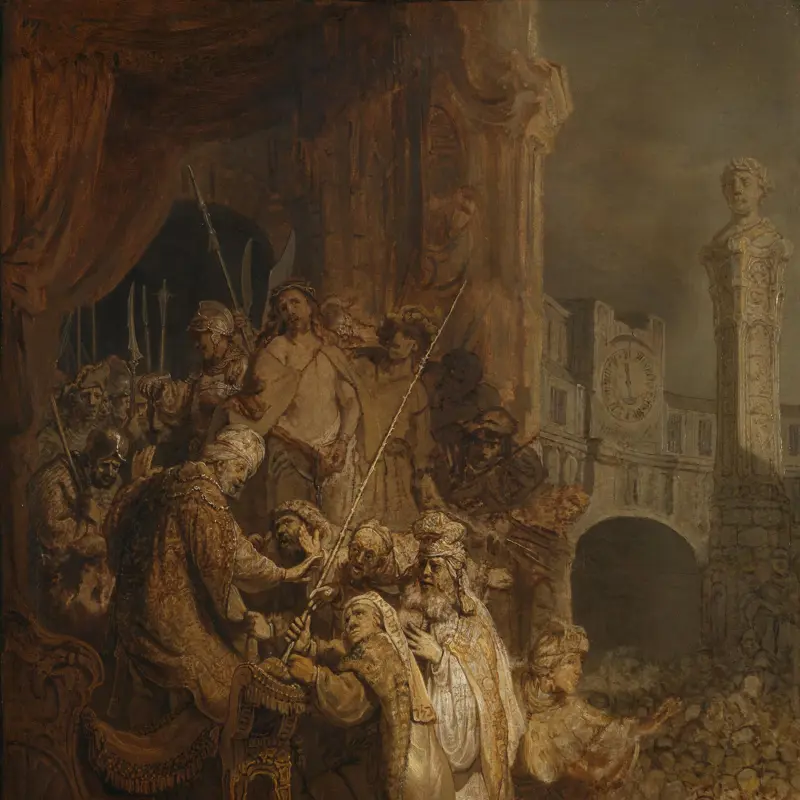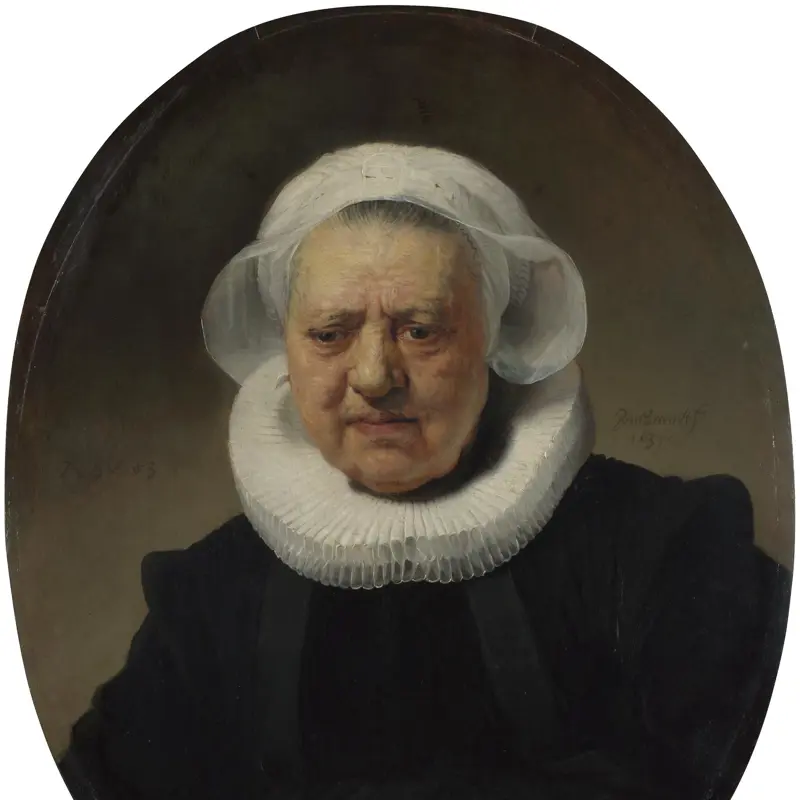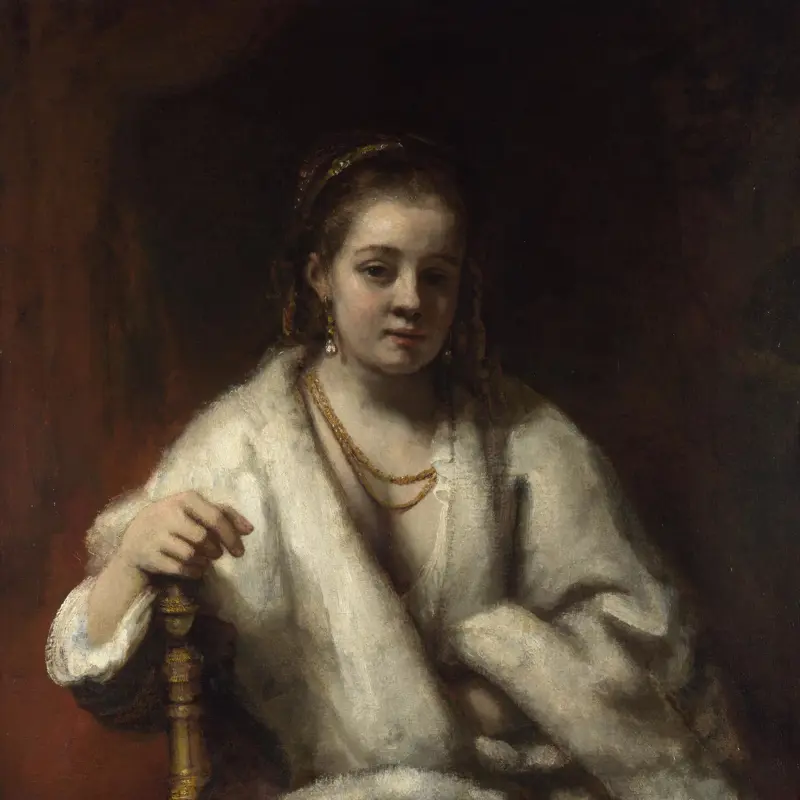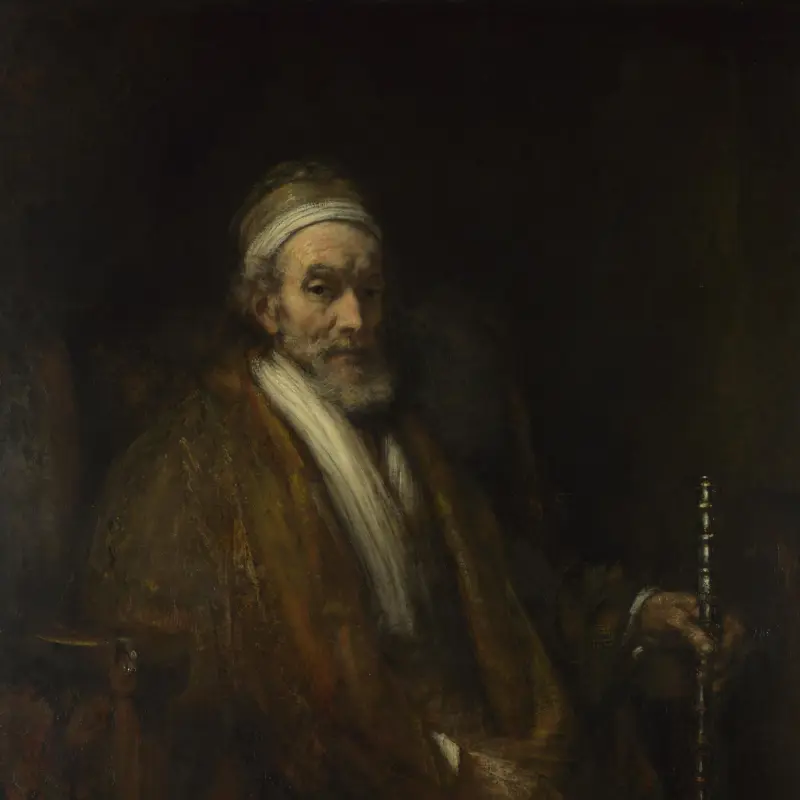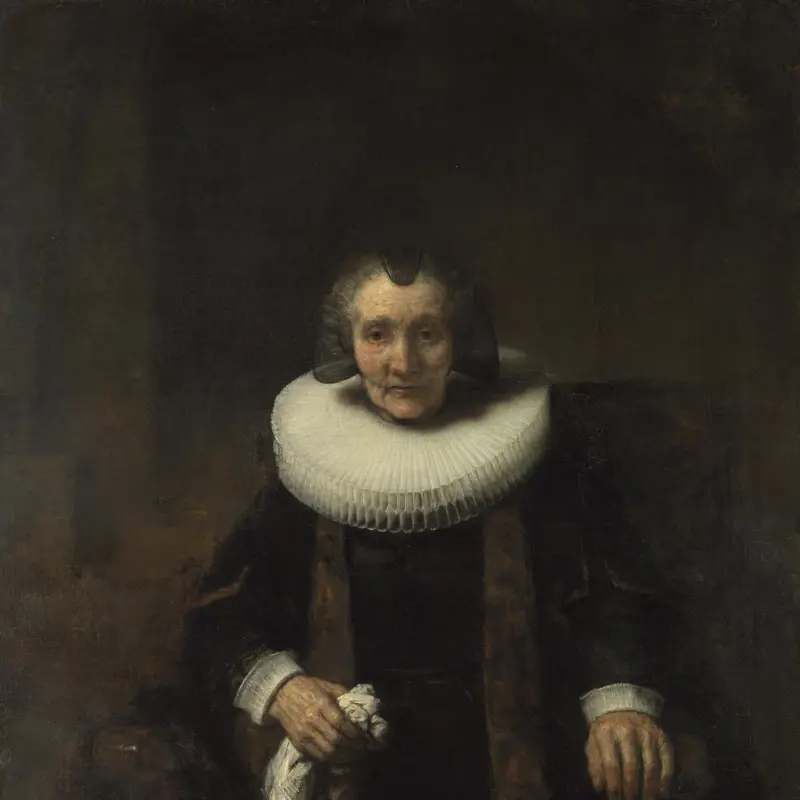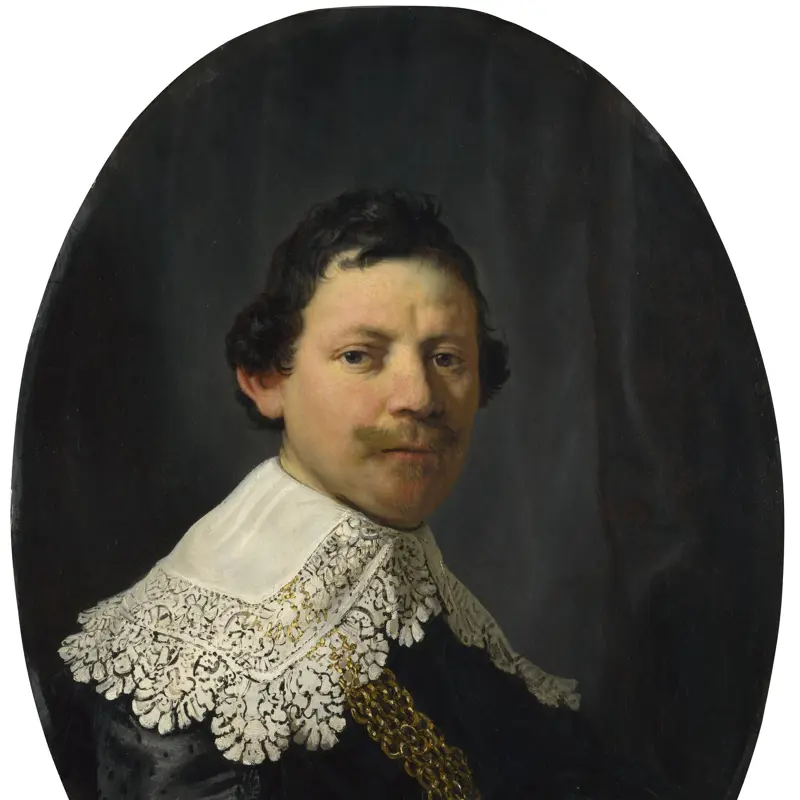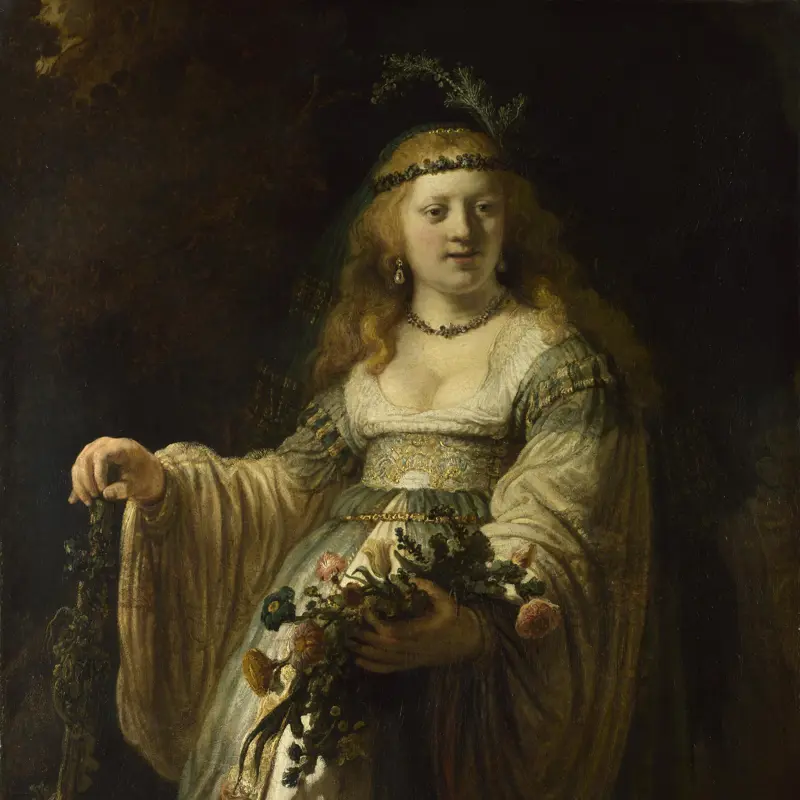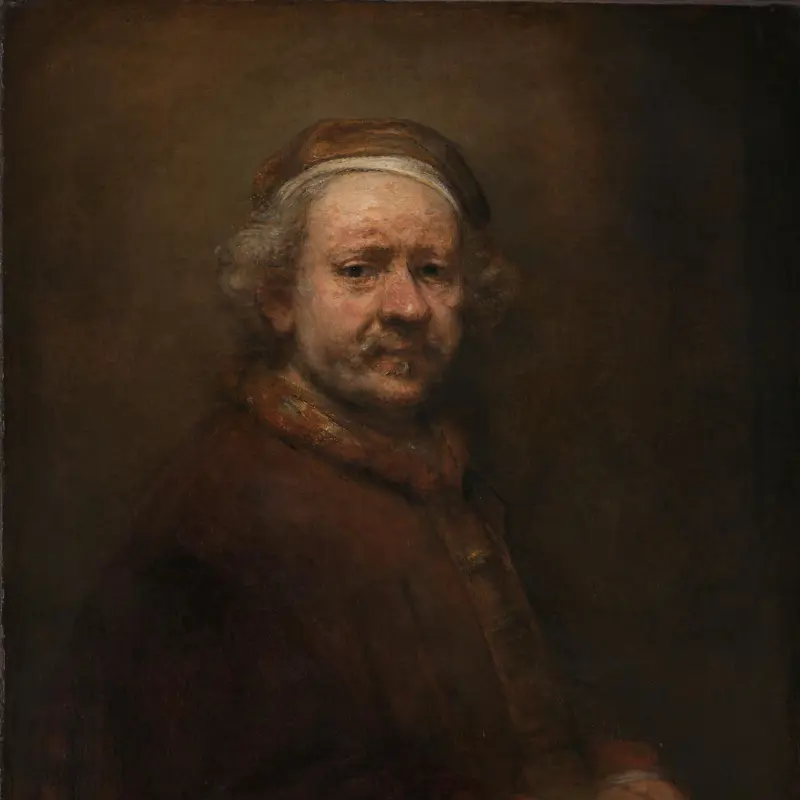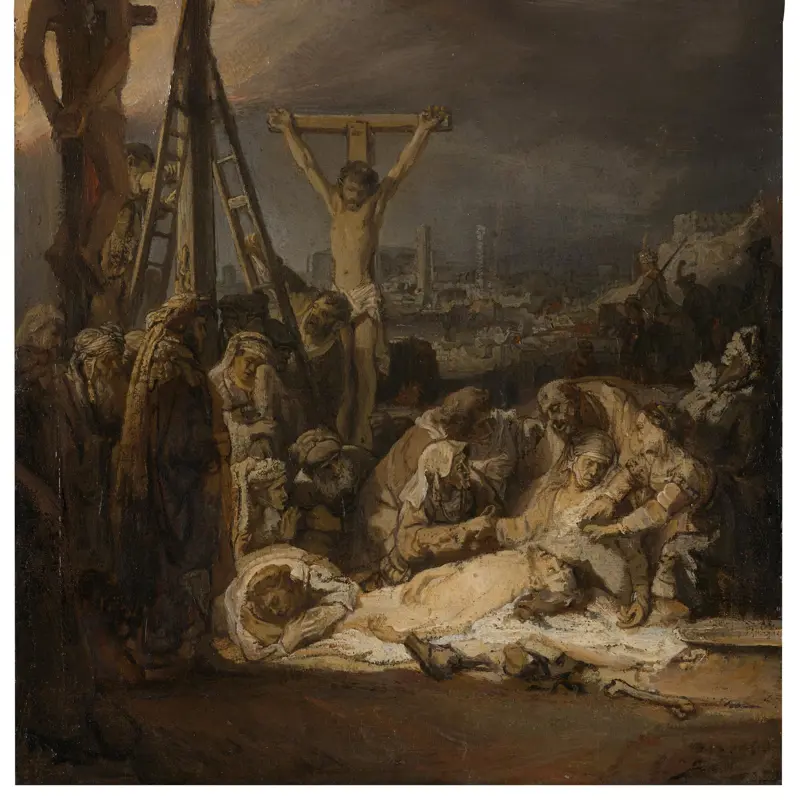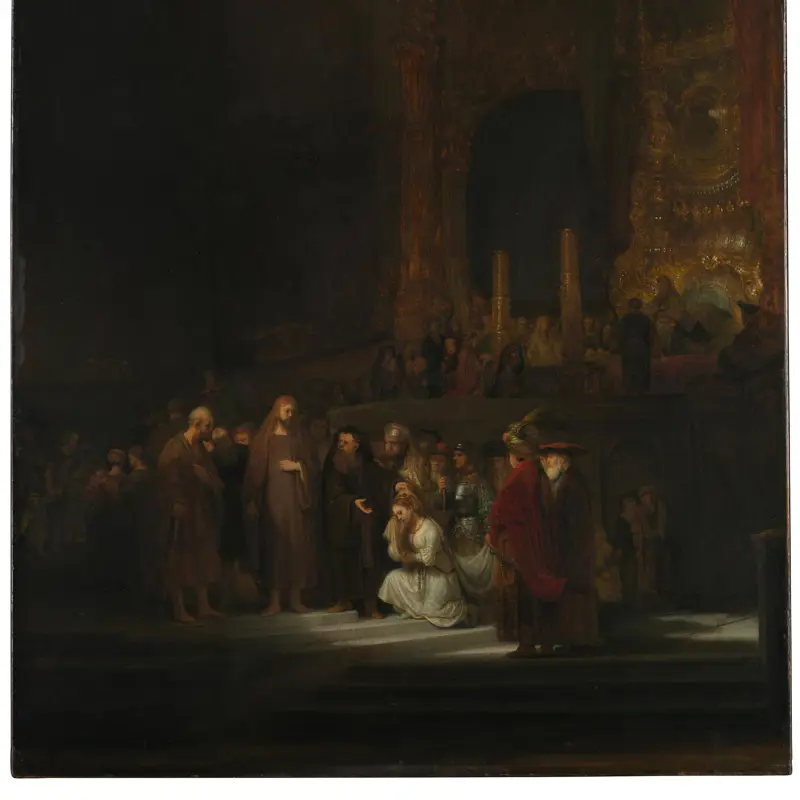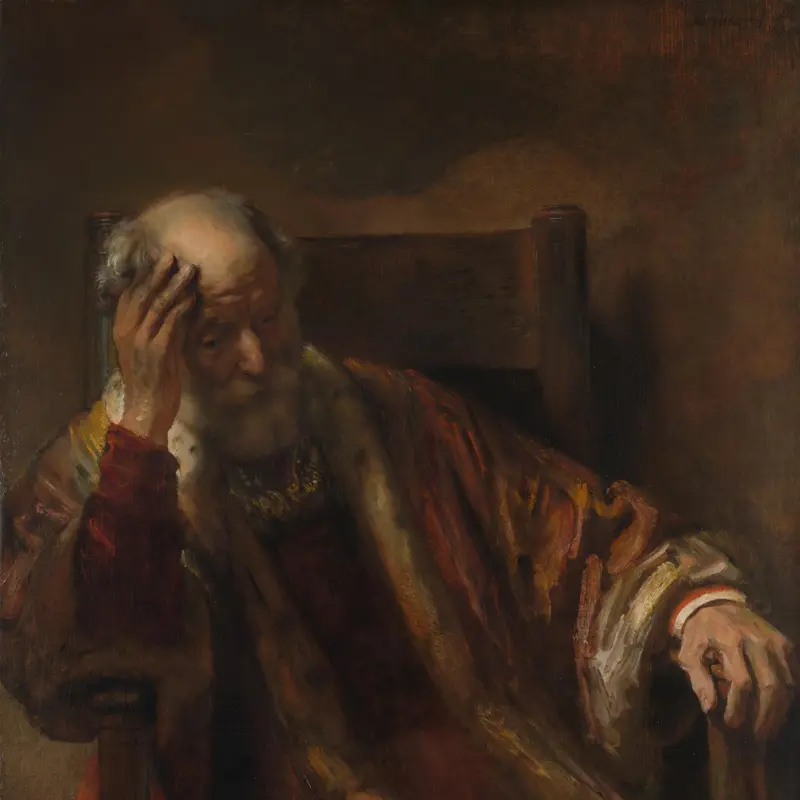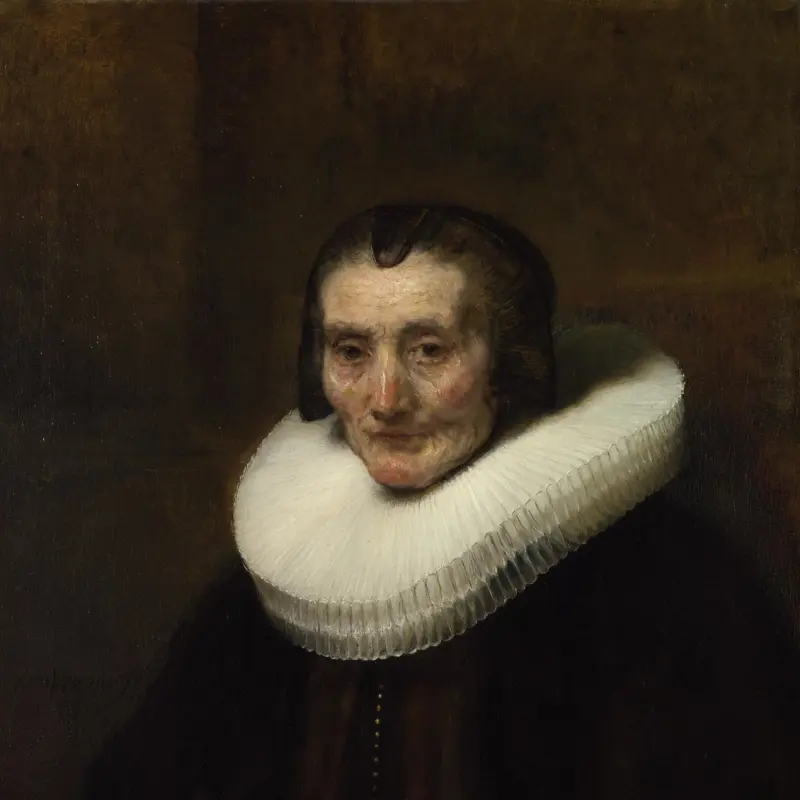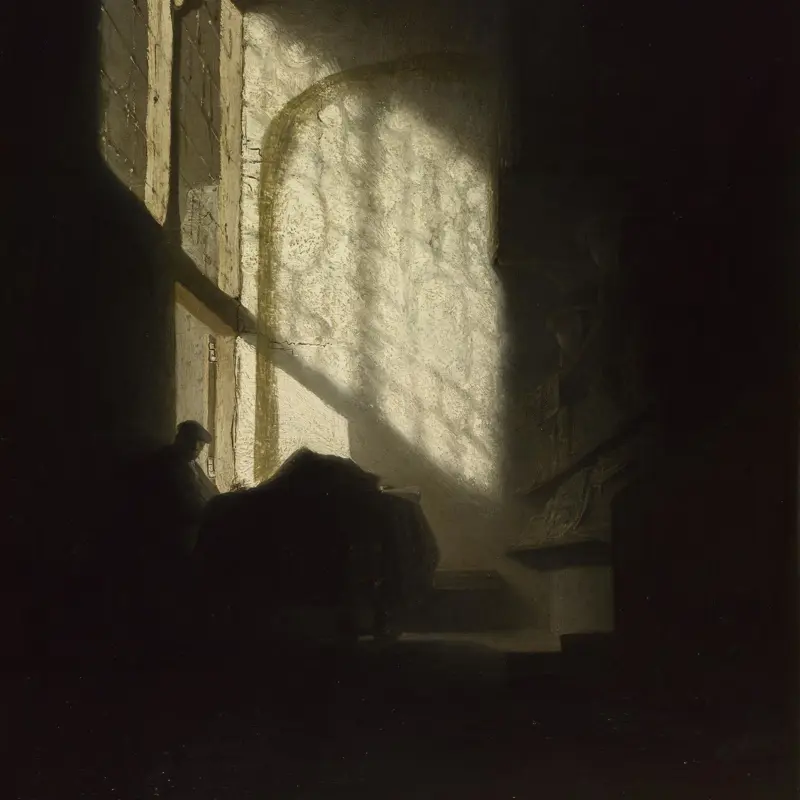The National Gallery has an exceptionally fine collection of works by Rembrandt van Rijn (1606–1669), spanning most of his career.
Rembrandt showed early artistic promise in his native Leiden. He worked there during the 1620s, apart from a brief apprenticeship in Amsterdam with Pieter Lastman (1583–1633). Around 1631 Rembrandt moved permanently to Amsterdam, quickly becoming one of the most sought-after portrait painters in the city. He equally excelled in painting historical and biblical subjects, while also making a name for himself as an exceptionally gifted printmaker. His skill in rendering light and shadow and his ability to capture the subtleties of human expression is just as evident in his drawings as in his paintings and etchings.
Rembrandt faced challenges later in life, including bankruptcy. Despite this, his work continued to evolve, displaying a deeper emotional resonance and a more expressive, ever looser, painting technique. Although his increasingly rough and brooding style of painting was out-of-step with a new fashion for smoothly finished and more evenly lit works, Rembrandt continued to receive commissions from some of the most prominent patrons in the Netherlands.


